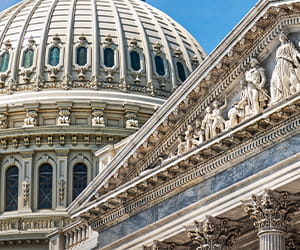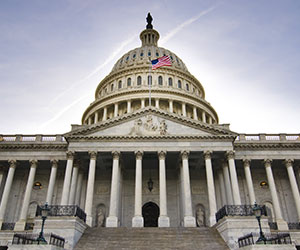New PPP Loan Forgiveness applications released

Update: In early 2021, SBA released new forgiveness forms and rules for first- and second-draw PPP loans. Click here to read our overview of what’s new and what hasn’t changed.
Following the early June passage of the Paycheck Protection Program (PPP) Flexibility Act, the Department of the Treasury and the Small Business Administration (SBA) on June 17 released two new versions of their PPP Loan Forgiveness Application: a fully revised version and a new “EZ” version. Both come with in-depth instructions on how to complete them.
Changes from the previous PPP forgiveness application include:
- A generally extended Covered Period, with options depending on when the loan was received
- New caps on payroll costs and owner compensation replacement
- An adjusted limitation ratio for payroll vs. non-payroll costs
- New or adjusted safe harbors and exemptions for employers related to reductions in employee numbers or wages
Read on for highlights of the guidance and information in the new standard application, and continue to the bottom for an introduction to the EZ application. You can also check out our new on-demand webinar, which provides more information on each of these points and walks through the loan forgiveness computations..
Already started your forgiveness application with the older guidelines in mind? Want to know whether your business might qualify for an EZ application? Our PPP Loan Forgiveness Assistance team can help you adapt to these changes.
Timing of forgivable costs
The new standard application establishes the options for calculating covered payroll costs as follows:
- Covered Period: “…either 1) the 24-week (168-day) period beginning on the PPP Loan Disbursement Date, or 2) if the Borrower received its PPP loan before June 5, 2020, the Borrower may elect to use an eight-week (56-day) Covered Period.”
- Alternative Payroll Covered Period: “For administrative convenience, Borrowers with a biweekly (or more frequent) payroll schedule may elect to calculate eligible payroll costs using the 24-week (168-day) period (or for loans received before June 5, 2020 at the election of the borrower, the eight-week (56-day) period) that begins on the first day of their first pay period following their PPP Loan Disbursement Date.”
In certain places in the application, Borrowers must apply only the Covered Period. Borrowers who choose to use the Alternative Payroll Covered Period must apply that period wherever the application references “the Covered Period or the Alternative Payroll Covered Period.”
Neither the Covered Period nor the Alternative Payroll Covered Period can extend beyond Dec. 31, 2020.
The application defines how payroll and non-payroll costs paid and incurred during the applicable period may be forgiven; e.g., amounts eligible for forgiveness may include pay earned during the period but not paid until after, if paid on or before the next regular payroll date. However, costs that were both incurred and paid may be counted only once; no “double-dipping.”
See the full application for specific information on when costs are counted as incurred or paid.
Forgivable costs and amounts
Forgivable costs include…
- Eligible payroll costs, as defined by the April 2 Interim Final Rules and the June 11 revisions to the rule. A June 16 Interim Final Rule capped salary, wages, and tips, at $100,000 of annualized pay per employee:
- For 24 weeks: A maximum of $46,154 per individual
- For eight weeks: A maximum of $15,385 per individual
- In addition to salaries, the rules include, “covered benefits for employees (but not owners), including health care expenses, retirement contributions, and state taxes imposed on employee payroll paid by the employer (such as unemployment insurance premiums).”
- The rule notes, “Given the 2.5 multiplier in the calculation of maximum PPP loan amount in SBA Form 2483, this per-individual maximum would only be reached if the borrower had reduced its FTEs but was eligible for an exemption (safe harbor) from the resulting reduction in forgiveness.”
- Amounts paid to owners (owner-employees, a self-employed individual, or general partners), subject to limitations:
- For borrowers using a 24-week covered period: Capped at the lower of 1) $20,833 (the 2.5-month equivalent of $100,000 per year) for each employee; or 2) the 2.5-month equivalent of their applicable compensation in 2019
- For borrowers using an eight-week covered period: Capped at the lower of 1) $15,385 (the eight-week equivalent of $100,000 per year) for each employee; or 2) the eight-week equivalent of their applicable compensation in 2019
- According to the June 16 Interim Final Rule, this amount should exclude “any qualified sick leave equivalent amount for which a credit is claimed under Section 7002 of the Families First Coronavirus Response Act (FFCRA) (Public Law 116-127) or qualified family leave equivalent amount for which a credit is claimed under Section 7004 of FFCRA.”
- Per a June 23 Interim Final Rule, for C corporation owner-employees the capped amount includes the amount of their 2019 employee cash compensation and employer retirement and health insurance contributions made on their behalf; for S corporation owner-employees, their 2019 employee cash compensation and employer retirement contributions, but not employer health insurance contributions, which are already included in employee cash compensation; and for general partners, “the amount of their 2019 net earnings from self-employment (reduced by claimed section 179 expense deduction, unreimbursed partnership expenses, and depletion from oil and gas properties) multiplied by 0.9235.” General partners (and other self-employed individuals) already have retirement and health insurance contributions included in their net self-employment income and so cannot add them separately to their payroll calculation.
- Covered mortgage, rent, and utility obligations – payments on such obligations, lease agreements, or services incurred or in force before Feb. 15, 2020
- Covered mortgage and rent obligations include both real and personal property
The ratio of forgivable costs is now 60% eligible payroll costs, 40% eligible non-payroll costs, up from 75% and 25% respectively.
SBA will reduce the amount forgiven by any Economic Injury Disaster Loan advance that was received.
Loans in excess of $2 million received by Borrowers and their affiliates will be subject to particular review. Certain waiver of affiliation rules apply.
Definition of a Full-Time Equivalent Employee
- “For each employee, enter the average number of hours paid per week, divide by 40, and round the total to the nearest tenth.”
- Simplified method – Assign a 1.0 for employees who work 40 hours or more per week, and 0.5 for employees who work fewer hours
- Listen to our previous on-demand webinar for discussion of which method might be most beneficial for your business.
Definition of Cash and Non-Cash Compensation
Cash compensation follows the caps noted in the “Payroll costs” section above and includes:
- Gross salary, gross wages, gross tips, and gross commissions
- Paid leave (vacation, family, medical or sick leave; not including leave covered by the Families First Coronavirus Response Act)
- Allowances for dismissal or separation for each employee
Non-cash compensation includes payment of:
- The provisions of group health care benefits, including employer contributions to a self-insured, employer-sponsored group health plan, but excluding any pre-tax or after tax contributions by employees
- Contributions to retirement benefit plans, excluding any pre-tax or after-tax contributions by employees
- State or local tax assessed on the compensation of employees
Reductions in loan forgiveness
In general, employers are subject to a reduction in their PPP loan forgiveness amount corresponding with reductions in their average number of full-time equivalent employees during the covered pandemic period, unless they eliminate that reduction – i.e., rehire those employees. The application lays out a specific calculation for determining these circumstances, as well as guidance related to the reduction in forgiveness amounts connected to reductions in salary.
However, there are safe harbors for borrowers that…
- Restore those employee numbers or wages by Dec. 31, 2020 – extended by the PPP Flexibility Act from June 30, 2020.
- Borrower restores its FTE employee levels by not later than Dec. 31, 2020, to its FTE employee levels in the borrower’s pay period that included Feb. 15, 2020
- Can document in good faith that they were unable return to the same level of business activity as such recipient was operating at before Feb. 15, 2020, due to compliance with requirements and guidelines issued by federal agencies during the period beginning on March 1, 2020, and ending Dec. 31, 2020, “related to the maintenance of standards for sanitation, social distancing, or other worker or customer safety requirement related to COVID-19.”
The package also establishes that the reduction calculation will not include:
- Any positions for which the borrower made a good-faith, written offer to rehire an employee who was employed on Feb. 15, 2020, and was unable to hire similarly qualified employees for unfilled positions on or before Dec. 31, 2020
- “Any positions for which the borrower made a good-faith, written offer to restore any reduction in hours, at the same salary or wages, during the Covered Period or the Alternative Covered Period and the employee rejected the offer”
- Any employees who during the applicable covered period were fired for cause, voluntarily resigned, or voluntarily requested and received a reduction of their hours.
Other information
The application package also includes:
- Documentation requirements: Which payroll and non-payroll documentation and other files must be submitted to lenders, versus which must simply be maintained.
- Certifications, including certifications that calculations are correct and appropriate and that the required documentation has been submitted.
- Penalties for false statements may include: “Imprisonment of not more than five years and/or a fine of up to $250,000; …imprisonment of not more than two years and a fine of not more than $5,000; and, if submitted to a Federally insured institution, … by imprisonment of not more than 30 years and/or a fine of not more than $1,000,000.”
The EZ application
The newly released EZ version of the PPP forgiveness application can be used by borrowers that meet one or more of the following conditions, as described in an SBA release:
- Are self-employed and have no employees; OR
- Did not reduce the salaries or wages of their employees by more than 25%, and did not reduce the number or hours of their employees; OR
- Experienced reductions in business activity as a result of health directives related to COVID-19, and did not reduce the salaries or wages of their employees by more than 25%.
The EZ application works with many of the same timelines, definitions, and other details outlined above, but it requires fewer calculations and less documentation. See the full documents for details.
What does CohnReznick think?
We believe further guidance from the Treasury is necessary for the items noted below:
- Payroll costs
- Retroactive bonuses from the prior year paid during the covered period deemed to be a payroll cost eligible for forgiveness
- Attribution rules – salaries for family members of an owner
- Non-cash compensation
- Discretionary profit-sharing contributions – can these be prorated over the covered period?
- Treatment of claims incurred prior to the covered period but paid in the covered paid for self-insured health plans
- Covered rent obligations – eligibility of CAM or real estate taxes to be included as a permissible and forgivable expense
- Metrics to be utilized by SBA to determine a recipient’s inability to return to the same level of business activity as such recipient was operating at before Feb. 15, 2020, due to compliance with requirements and guidelines issued by federal agencies during the period beginning on March 1, 2020, and ending Dec. 31, 2020, “related to the maintenance of standards for sanitation, social distancing, or other worker or customer safety requirement related to COVID-19.”
- Requirements for borrowers to maintain employees after the covered period or Dec. 31, 2020
- Permitted use of unused loan funds after forgiveness
We will provide additional guidance as it becomes available.
For more information, listen to our on-demand webinar on the new applications, access the full PPP loan forgiveness applications and instructions, or contact our PPP Loan Forgiveness Assistance team.
Contact
Stephanie O’Rourk, CPA, Partner, Hospitality
404.250.4079
Jeff Bobrosky, Partner, Assurance
818.205.2640
Contact
Let’s start a conversation about your company’s strategic goals and vision for the future.
Please fill all required fields*
Please verify your information and check to see if all require fields have been filled in.

Coronavirus Resource Center

On-Demand Webinar: PPP - Revised Loan Forgiveness Application Released

PPP Recent Treasury Guidance on Eligibility and More
Any advice contained in this communication, including attachments and enclosures, is not intended as a thorough, in-depth analysis of specific issues. Nor is it sufficient to avoid tax-related penalties. This has been prepared for information purposes and general guidance only and does not constitute legal or professional advice. You should not act upon the information contained in this publication without obtaining specific professional advice specific to, among other things, your individual facts, circumstances and jurisdiction. No representation or warranty (express or implied) is made as to the accuracy or completeness of the information contained in this publication, and CohnReznick, its partners, employees and agents accept no liability, and disclaim all responsibility, for the consequences of you or anyone else acting, or refraining to act, in reliance on the information contained in this publication or for any decision based on it.












